Pickleball, a sport that’s been sweeping the nation with its fun and engaging gameplay, is for everyone. That’s right, it’s a game that inclusively extends its court to wheelchair players, ensuring everyone gets a slice of the action. But, when it comes to playing pickleball in a wheelchair, there are a few special rules to keep the play fair and competitive.
These adaptations ensure that the game remains challenging yet accessible, allowing players of all abilities to enjoy the camaraderie and competition pickleball offers. Whether you’re a seasoned player or new to the sport, understanding these rules can enhance the game for everyone involved. Let’s dive into the world of pickleball for wheelchair players and discover what makes this sport uniquely inclusive.
Understanding Pickleball Rules for Wheelchair Players
Pickleball has made a name for itself as a highly inclusive sport which extends a warm welcome to players of all abilities, including those who use wheelchairs. Rules specific to wheelchair players have been established to ensure fairness and competitiveness on the court. These adaptations reflect the sport’s commitment to inclusivity and accessibility.
One of the notable modifications in pickleball for wheelchair players is the two-bounce rule. Unlike the standard game where the ball must bounce once before volleys are allowed, wheelchair players are afforded an extra bounce. This adjustment allows players enough time to maneuver their wheelchairs and position themselves effectively to hit the ball. This rule applies to serves, returns, and during rallies, underscoring the sport’s flexibility to accommodate different players’ needs.
The size of the court and the net height remain unchanged for wheelchair players, preserving the integrity and challenge of the game. However, players are allowed certain concessions when it comes to serving. Wheelchair users can serve the ball either overhand or underhand, and the serve can be executed from any position behind the baseline. This flexibility ensures that players with varying degrees of mobility can participate competitively in the game.
Player Mobility and Equipment Adaptations play a crucial role in the game. Wheelchairs used in pickleball are considered part of the player’s body, which means the standard rules regarding player conduct and ball contact apply. For instance, just as a standing player cannot touch the net or step into the non-volley zone (also known as the kitchen) to volley a ball, the same rules apply to wheelchair players and their equipment.
Regarding mobility on the court, players should note the following specifics:
- Wheelchair Movement: Players must ensure their chair remains within the bounds of the playing area during rallies. Quick turns and strategic positioning are key to covering the court effectively.
- Paddle Adjustments: Players may opt for paddles with longer handles or custom grip adjustments to extend their reach and improve their game.
Participation and Representation are vital components of inclusively expanding sports, and pickleball is no exception. Tournaments specifically tailored for wheelchair players have been on the rise, offering a platform for fierce competition and camaraderie among athletes. These events not only showcase the athletic prowess of the participants but also highlight the sport’s adaptability and its community’s welcoming spirit.
Safety and proper training cannot be overstated, especially for new players.
Serving Rules for Wheelchair Pickleball
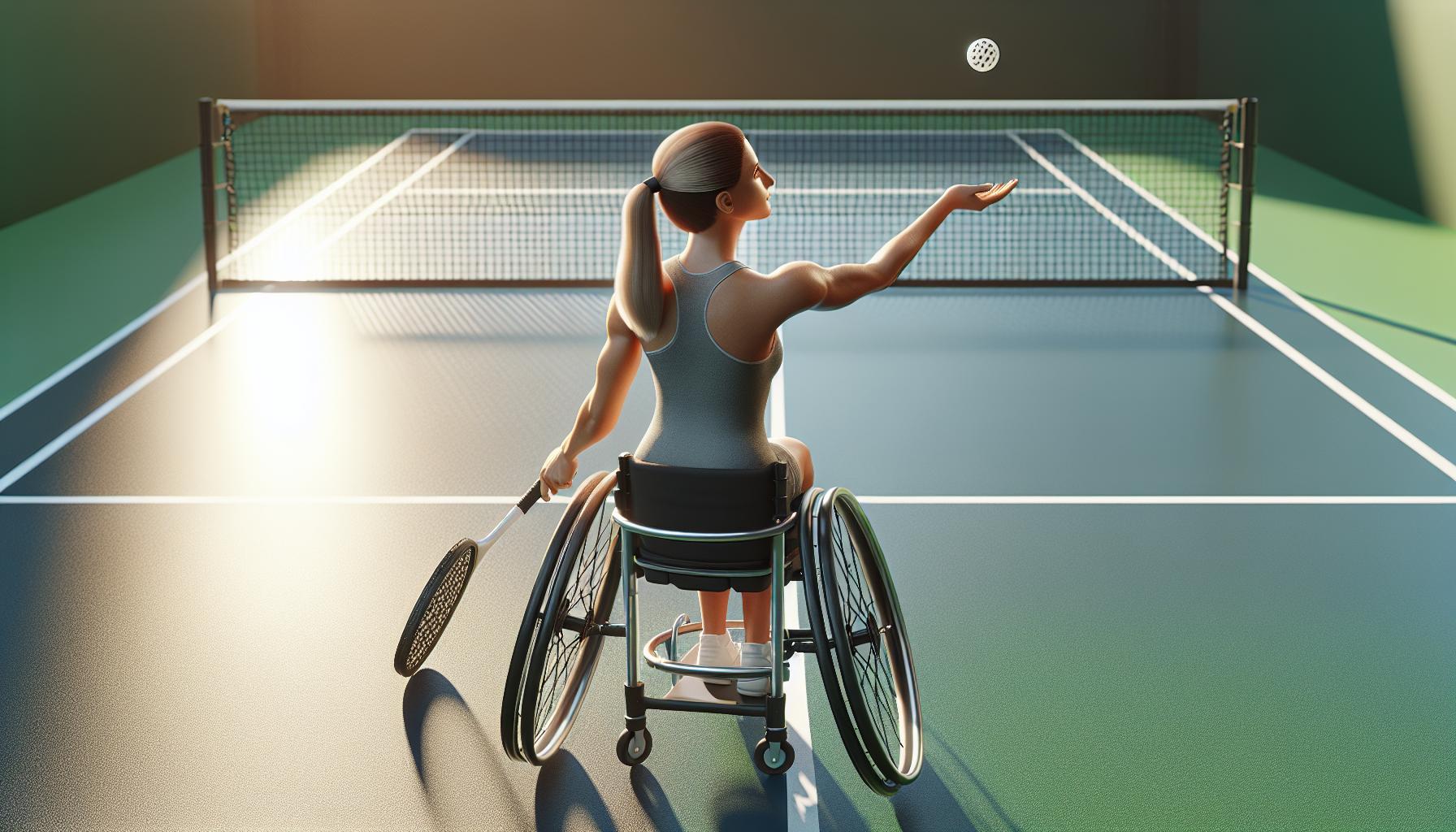
In wheelchair pickleball, the serving rules have been thoughtfully adapted to ensure players have an equitable chance to showcase their skills right from the serve. These adaptations are critical, as the serve initiates play and sets the tone for each point. Understanding these rules is vital for both new and seasoned players who want to engage fully in the sport or transition smoothly from standing to wheelchair pickleball.
First and foremost, wheelchair players are allowed two attempts to make a legal serve. This accommodation recognises the additional challenges wheelchair users might face in achieving the correct serve trajectory and landing spot. It’s a nod to inclusivity without compromising the competitive spirit of the game.
Serving in pickleball typically requires the ball to be hit underhand, and this rule remains unchanged for wheelchair players. However, flexibility is offered in terms of where the ball can be struck. To accommodate different wheelchair heights and arm lengths, players can serve the ball after it bounces once on the court. This provision ensures that wheelchair athletes can serve with strength and accuracy, aligning with their standing counterparts’ abilities.
The service box positioning is another area where inclusivity shines. Wheelchair players are not confined strictly to the service area’s traditional boundaries. They can serve from a slightly adjusted position if needed, as long as it doesn’t give them an undue advantage over their opponent. This slight flexibility acknowledges the diverse mobility and reach of wheelchair users, ensuring they can serve effectively and safely.
One of the most unique aspects of serving rules for wheelchair players is the treatment of the wheelchair itself. The wheelchair is considered an extension of the player’s body. Therefore, any normal rule that applies to a player’s body movement and positioning during a serve also applies to the wheelchair. This consideration is crucial for maintaining fairness, as it accounts for the varied ways players might maneuver their chairs to execute a serve.
The serving rules also emphasize the importance of safety and fair play. Wheelchair mobility and stability during serving are paramount, with players encouraged to adopt techniques and strategies that prevent tipping or collisions. As the sport continues to grow, these rules may evolve, always with the aim of enhancing participation and competition.
Court Positioning Guidelines
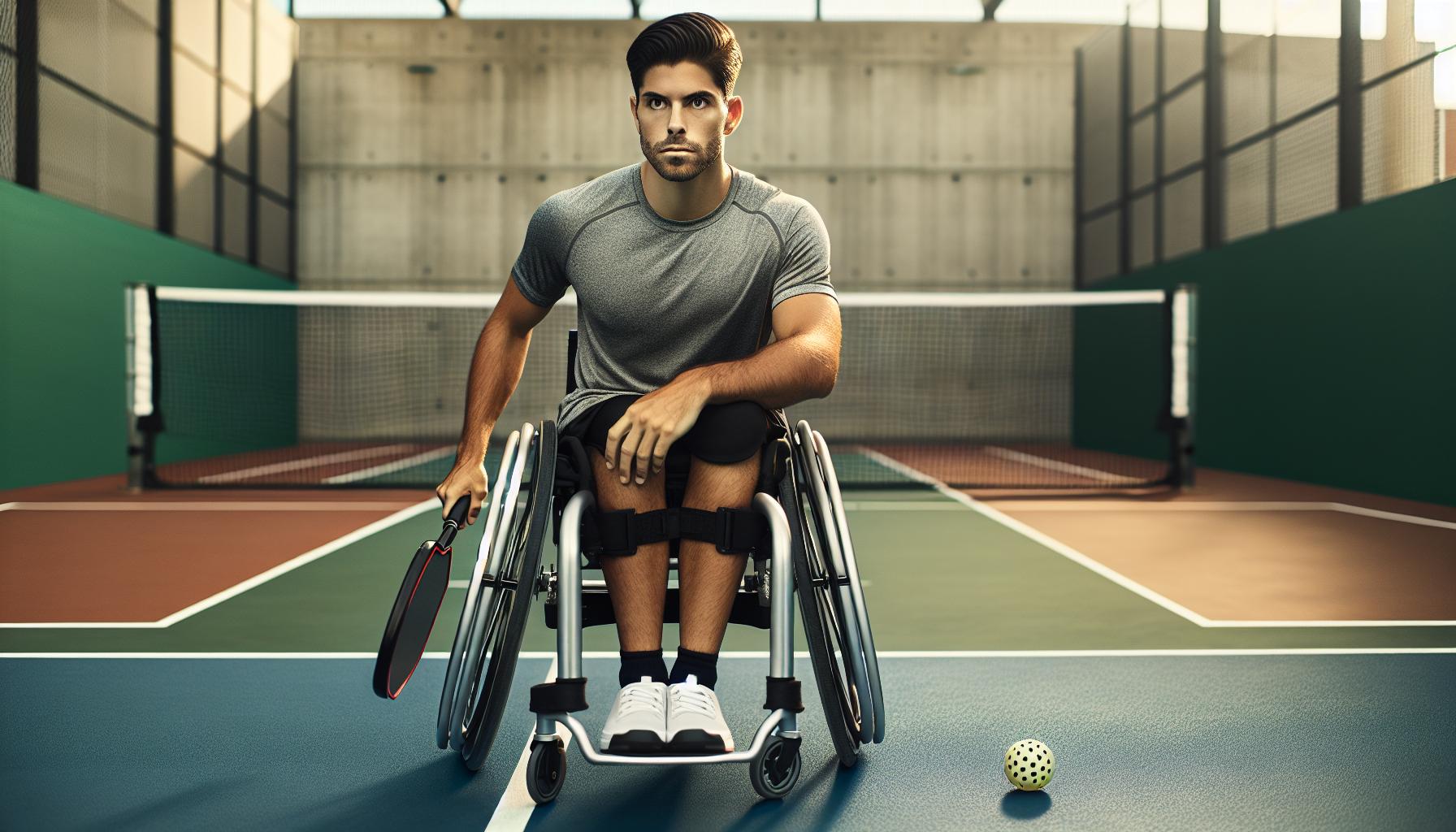
In wheelchair pickleball, court positioning is essential for maximizing strategic play and ensuring safety. The game’s unique considerations for wheelchair athletes necessitate customized guidelines that accommodate various mobility levels and strategies.
Wheelchair athletes are granted certain flexibilities in their on-court positions, especially when serving or returning the ball. The key is to maintain a balance between competitive fairness and inclusivity. For instance, the player’s wheelchair is allowed to be positioned slightly outside the baseline or sideline when serving. This adjustment acknowledges the need for a broader range of motion and compensates for the extra space the wheelchair occupies.
During the game, players must maneuver within the court boundaries, but certain allowances are made. For example, when reaching for a wide shot, a player’s wheelchair may briefly cross the plane of the non-volley zone, also known as the kitchen, provided the player does not touch the ground within it with any part of their body or chair. This rule ensures that players have the flexibility to make plays without overly strict spatial restrictions, which could otherwise detract from the game’s fluidity.
Mobility and Strategy
Wheelchair mobility varies greatly among players, influencing their court positioning and strategic options. Players with higher mobility levels might adopt an aggressive play style, positioning themselves closer to the net to better control volleys and dinks. Meanwhile, players with more limited mobility might position themselves further back, relying on powerful groundstrokes and strategic placement of the ball.
Strategic positioning also involves anticipation and prediction. Players need to read their opponent’s movements and adjust their position accordingly, always ready to counter attacks or exploit openings. The challenge lies in balancing offensive and defensive positioning while managing the physical demands of wheelchair mobility.
- The Two-Bounce Rule: To level the playing field, the two-bounce rule allows the ball to bounce once on each side of the net before volleys can be exchanged. This rule gives wheelchair players sufficient time to position themselves and respond to the ball, promoting longer and more dynamic rallies.
- No Physical Contact with the Court Lines: Players must navigate the court without their wheels or any part of the wheelchair touching the court lines during play. Accidentally crossing or touching a line with the wheelchair is considered a fault, emphasizing the importance of precise movement and spatial awareness.
- Safety Precautions: Players are encouraged to maintain a safe distance from the net and other on-court obstacles to prevent collisions. The emphasis on safety ensures
Double Bounce Rule Adaptations

The double bounce rule is a distinctive aspect of pickleball, significantly affecting the way wheelchair athletes engage with the sport. Adapted to ensure equal play and fairness, it necessitates the ball to bounce once on each side of the net before volleys are permitted. For wheelchair players, this rule has been slightly modified to account for their mobility and to foster longer rally exchanges. Understanding these modifications is crucial for players aiming to refine their strategic approach and for ensuring everyone is playing by the same rules.
In addition to the standard pickleball rules, wheelchair players are given an extra bounce if needed. This adaptation acknowledges the varying levels of mobility among wheelchair athletes, providing them with ample time to reach the ball. It’s important to note that this doesn’t mean every hit requires an extra bounce; rather, it’s an option available to players, enhancing the game’s inclusivity without compromising the competitive spirit.
The allowance of a second bounce brings several strategic components into play. Wheelchair athletes must constantly make quick decisions on when to utilize the additional bounce, balancing the risk and reward of each choice. The element of surprise can also play a significant role, as opponents may not anticipate the use of the extra bounce. Effective use of this rule can lead to more dynamic and unpredictable gameplay.
It’s also essential for players to develop awareness and control over their movements to make the most out of the double bounce rule:
- Positioning and anticipation become even more critical, as players need to predict where the ball will land after the second bounce.
- Hand-eye coordination and timing are key in executing shots after allowing the extra bounce, requiring players to adjust their techniques accordingly.
The double bounce rule adaptations have been positively received within the wheelchair pickleball community. They ensure that matches are competitive and engaging, while also prioritizing safety and accessibility. Players and coaches are encouraged to incorporate drills and exercises focused on optimizing this rule during practice sessions, aiming to enhance their proficiency in longer rallies and strategic play.
Furthermore, officials and referees overseeing matches must be well-versed in these adaptations, ensuring that games are conducted fairly. Educating all participants about the nuances of the double bounce rule is vital in promoting an inclusive environment where the skills and efforts of wheelchair athletes are rightfully acknowledged and celebrated.
Strategies for Wheelchair Pickleball Success
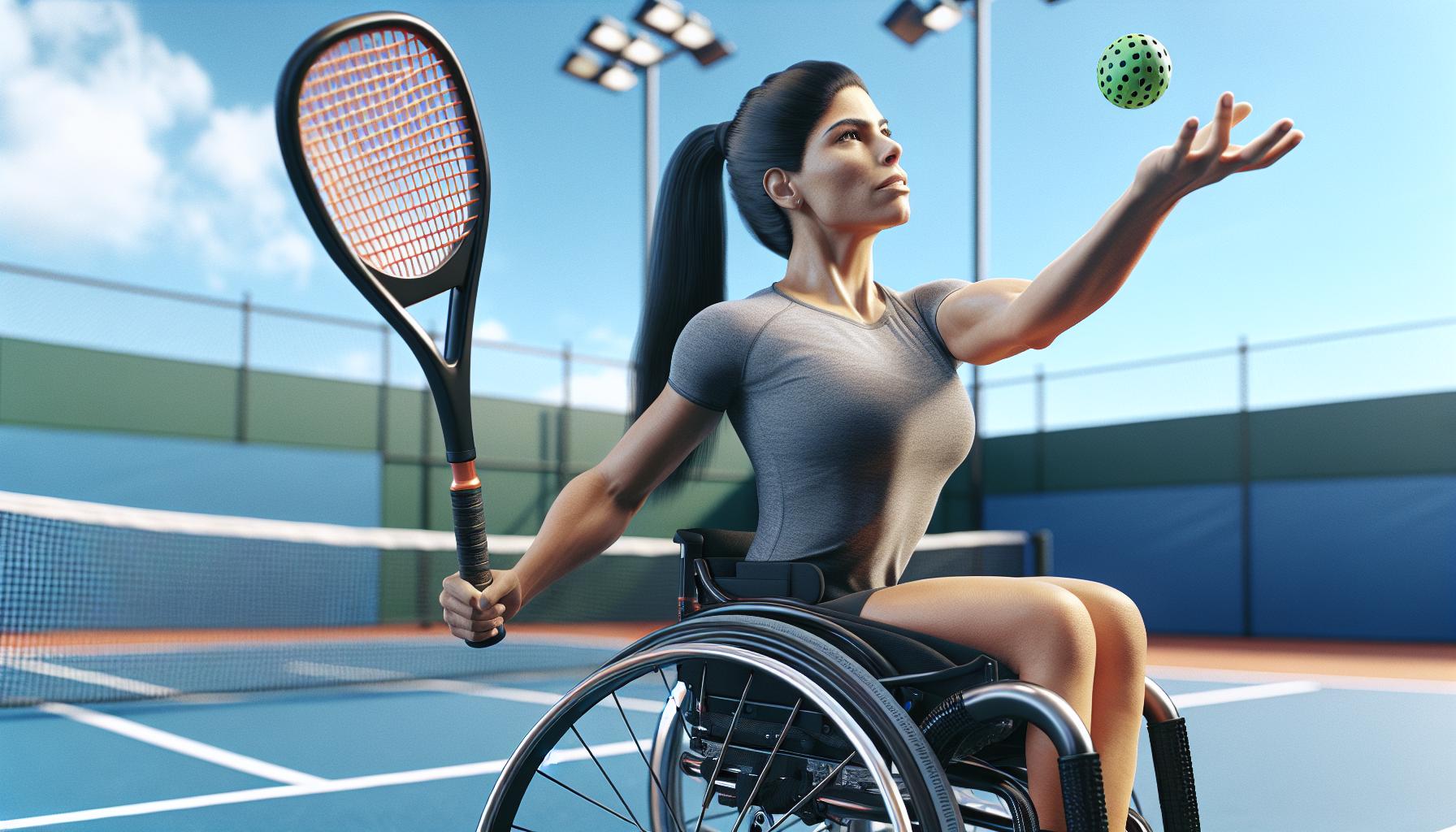
Adapting to pickleball as a wheelchair athlete brings its own set of challenges and strategies. While mastering the rules, including the modifications for wheelchair players such as the double bounce rule, is crucial, success in the game often hinges on specific strategies tailored to maximize mobility and skill in a wheelchair.
Mastering Court Positioning
Effective court positioning is paramount for wheelchair athletes. Staying towards the center of the court allows for a wider range of motion and reduces the distance needed to move to reach the ball. It’s also important for players to practice switching from offense to defense swiftly. This skill helps in covering more court and responding to opponents’ shots with greater efficiency.
Enhancing Serve and Return Techniques
A powerful serve can give wheelchair athletes a significant advantage. They should focus on developing a serve that is both difficult to predict and to return. Experimenting with different serving techniques, such as varying the speed and spin, can add an unpredictable element to their game. Similarly, mastering the art of the return by anticipating the opponent’s serve improves their ability to take early control of the rally.
Utilizing the Double Bounce Rule
The double bounce rule, allowing the ball to bounce twice when necessary, opens up a strategic depth for wheelchair players. Athletes can use this rule to position themselves better, prepare for more strategic shots, and even conserve energy during intense matches. However, relying too much on the extra bounce can be a double-edged sword, as it may also give opponents more time to position themselves more advantageously.
Building a Strong Mental Game
Mental toughness plays a crucial role in the success of wheelchair pickleball players. The ability to stay focused, maintain positivity, and keep a clear head under pressure can turn the tide of a match. Players should also develop their ability to read their opponents’ strategies and adjust their gameplay accordingly.
Focusing on Fitness and Mobility
While technique and strategy are vital, physical fitness cannot be overlooked. Engaging in regular conditioning that focuses on upper body strength, endurance, and flexibility will enhance mobility on the court. Additionally, specific exercises that improve speed and agility in a wheelchair can give players a competitive edge.
Conclusion
Mastering the game of wheelchair pickleball goes beyond just knowing the rules. It’s about strategically applying them in combination with physical fitness and mental toughness. Players who focus on enhancing their court positioning, serve, and return skills while keeping their fitness at peak levels will find themselves at a competitive advantage. Remember, it’s not just about how well one knows the game but how well one adapts to the dynamics of each match. With dedication and practice, anyone can elevate their wheelchair pickleball game to new heights.

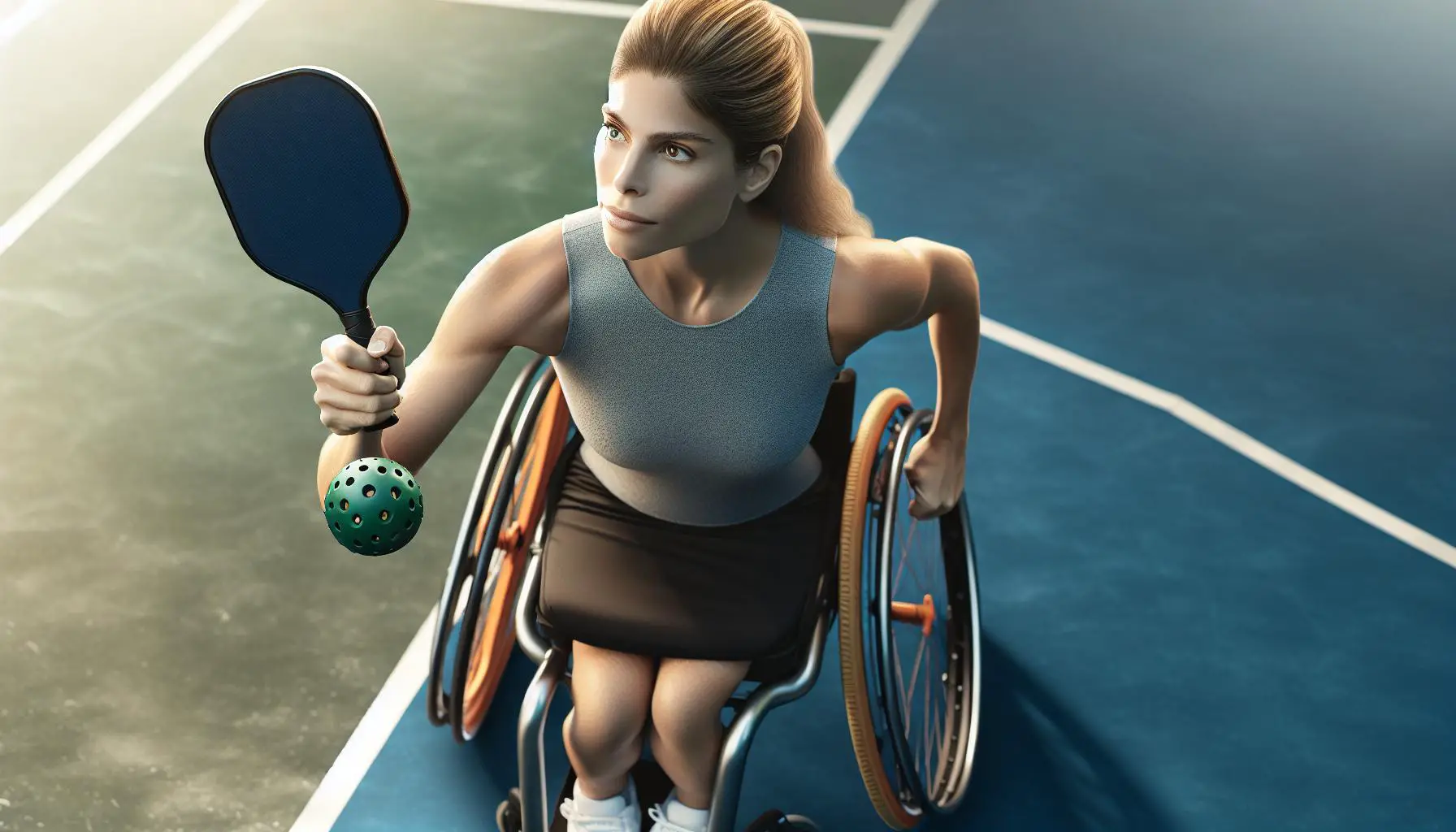









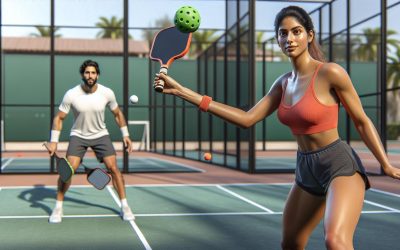
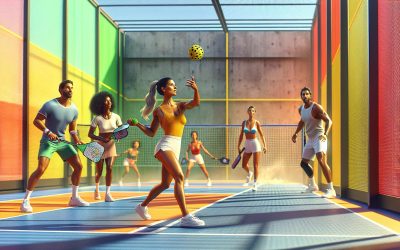

0 Comments